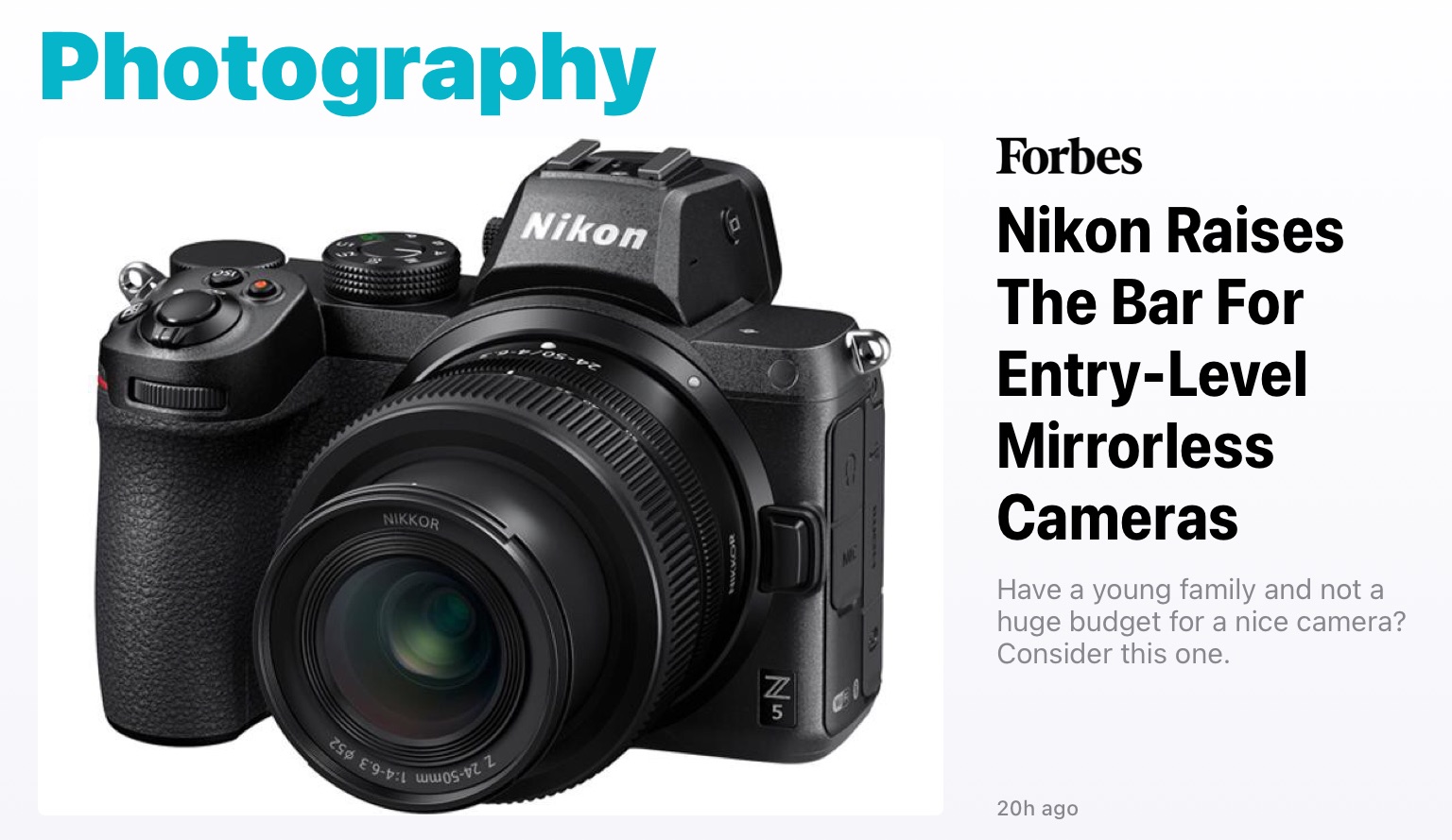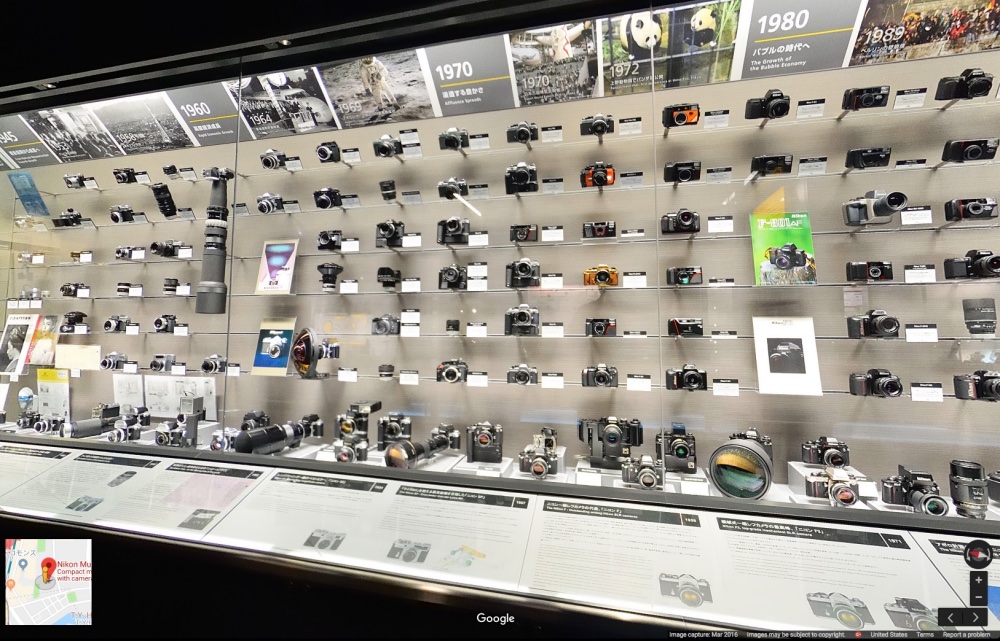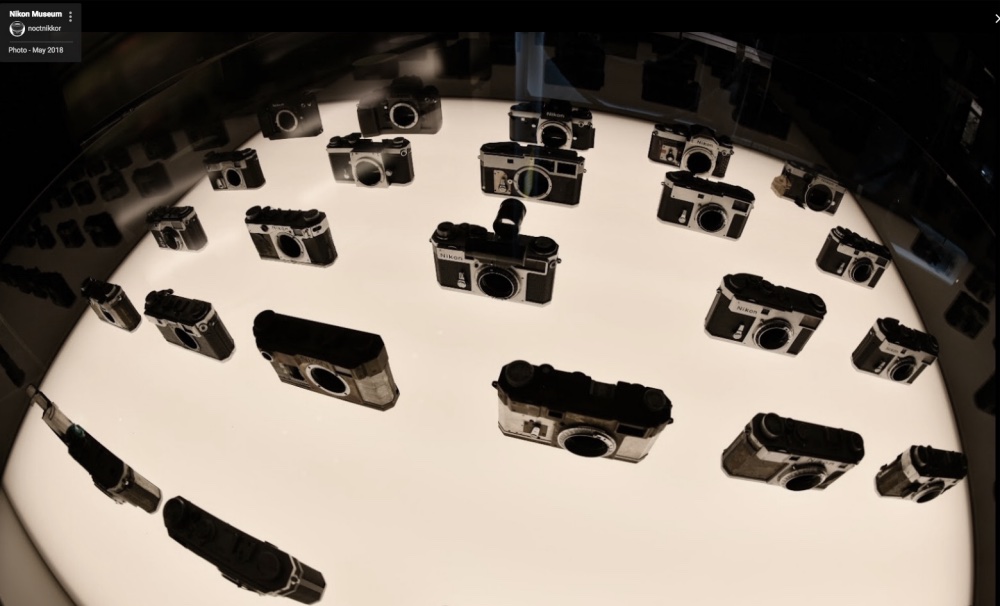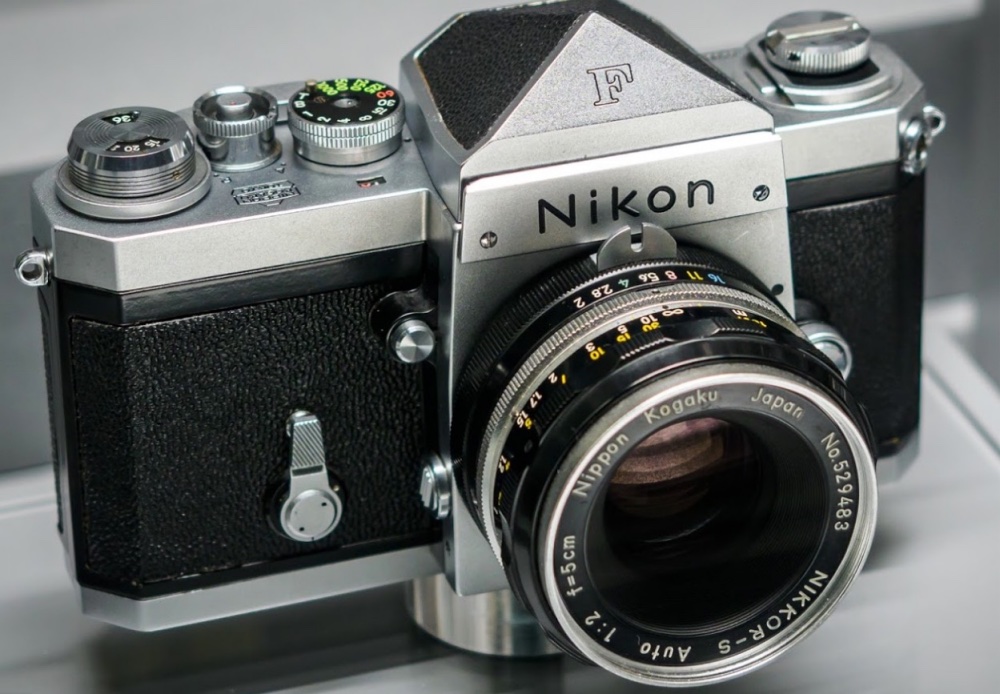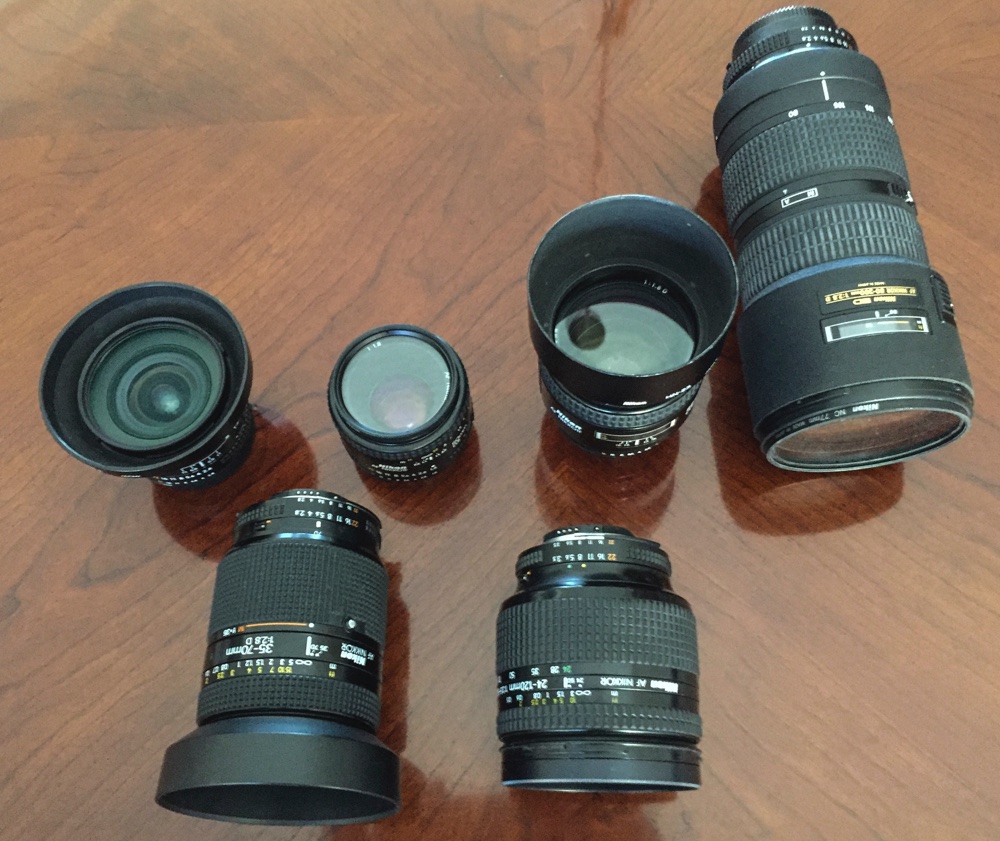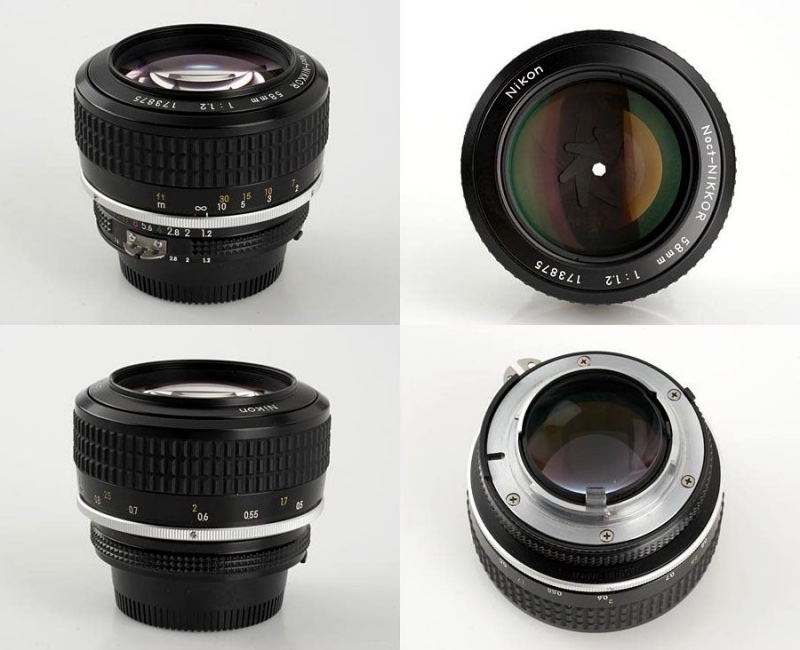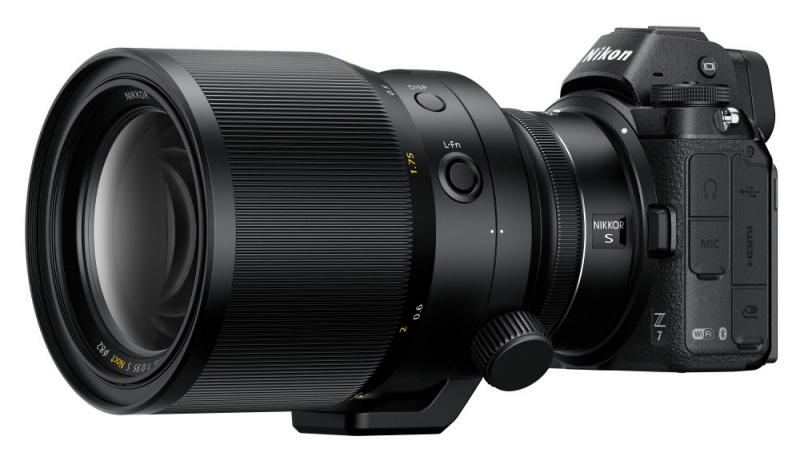A decent walkabout optic.
The heart warming facts about Nikon’s AFD zoom optics is not only that many choices exist but also that many are insanely inexpensive in mint, used condition.
My mint copy of the 28-105mm f/3.5-4.5 ran me but $78 plus $7 to Amazon for a 62mm UV protective filter. I did not bother getting a lens hood as the one for this lens is huge and mostly useless.
The rational ‘walkabout’ comparison is the 24-120mm f/3.5-5.6 IF lens which adds internal focusing for a smoother feel and extends more at both ends. I have been using the 24-120mm on my Nikon F100 with Ektar film with considerable success. If there’s a complaint it’s the generous dollops of distortion, barrel at the wide end and pincushion at the long. This needs correcting in LR with architectural subjects, a pain but not hard to do.
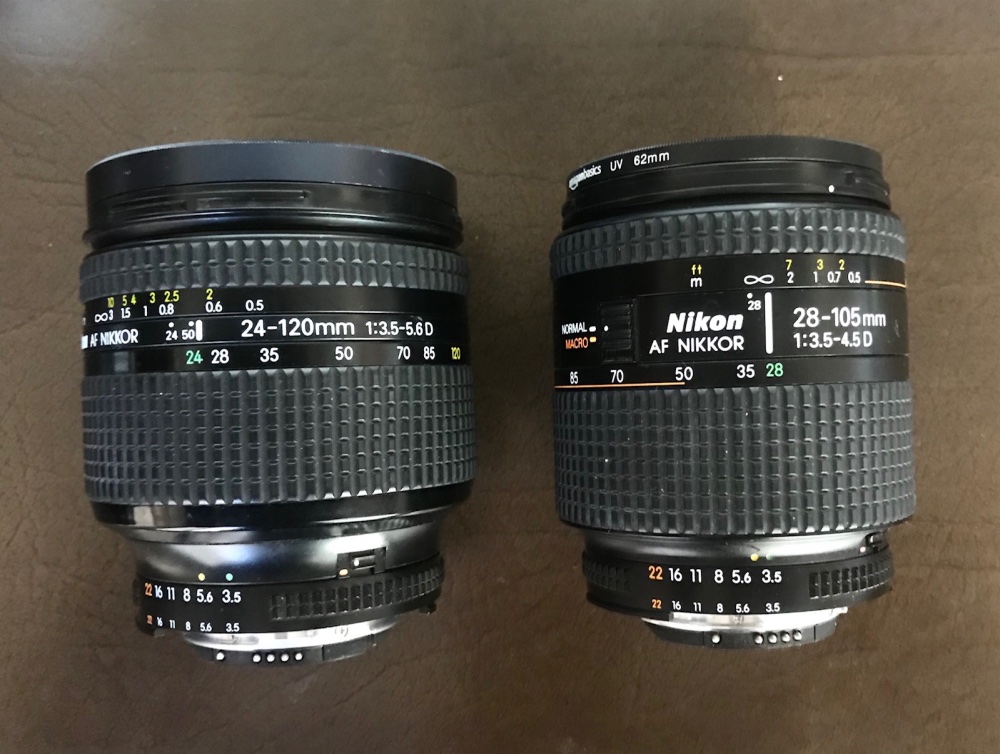
At their widest settings. Note that the zoom rings work in opposite directions.
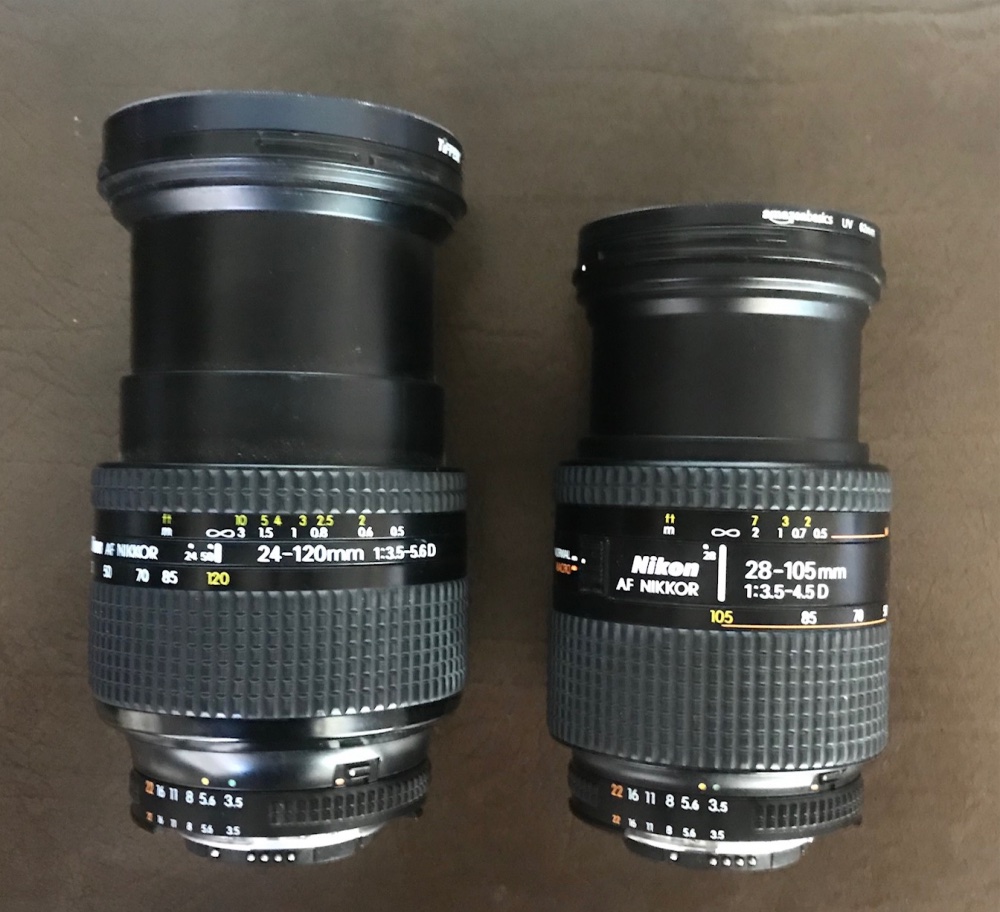
At the longest focal lengths.
So how does the 28-105mm differ? Bulk and weight are much the same, the zoom rings displays a tad more stiction owing to the traditional design, the optic is faster at the long end by one stop and adds a handy macro feature.
Here are test images – you can compare with those from the 24-120mm f/3.5-5.6 by clicking here.
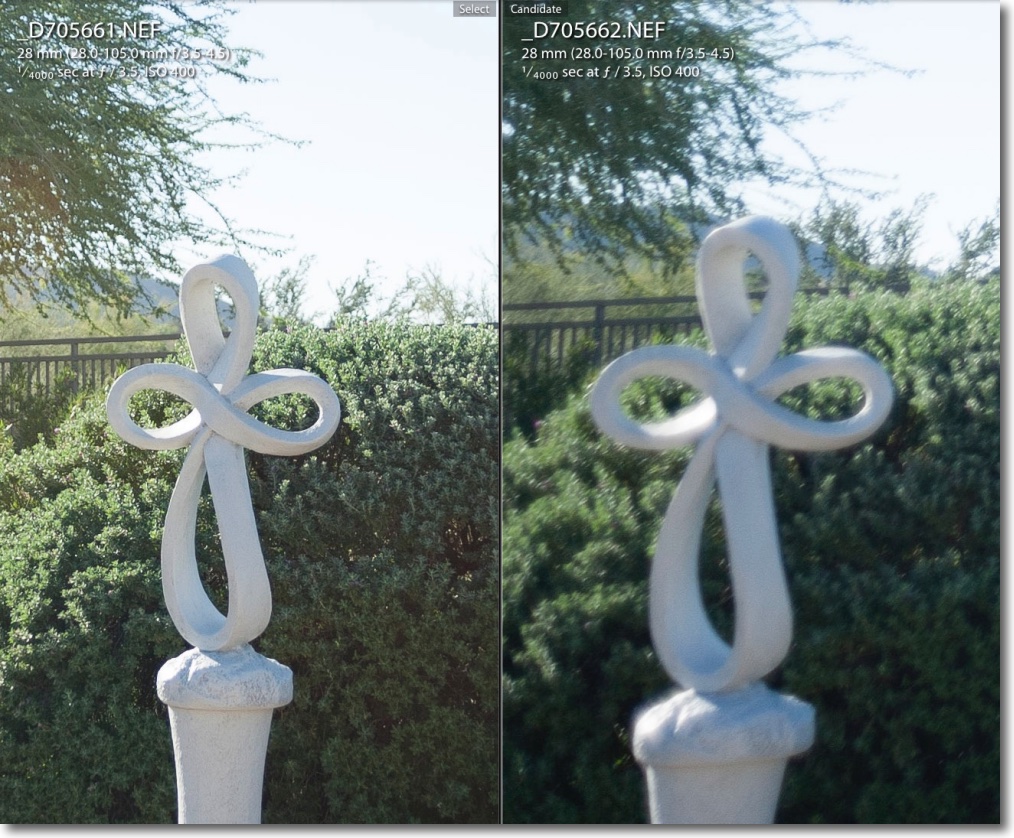
At 28mm, f/3.5, center and edge.
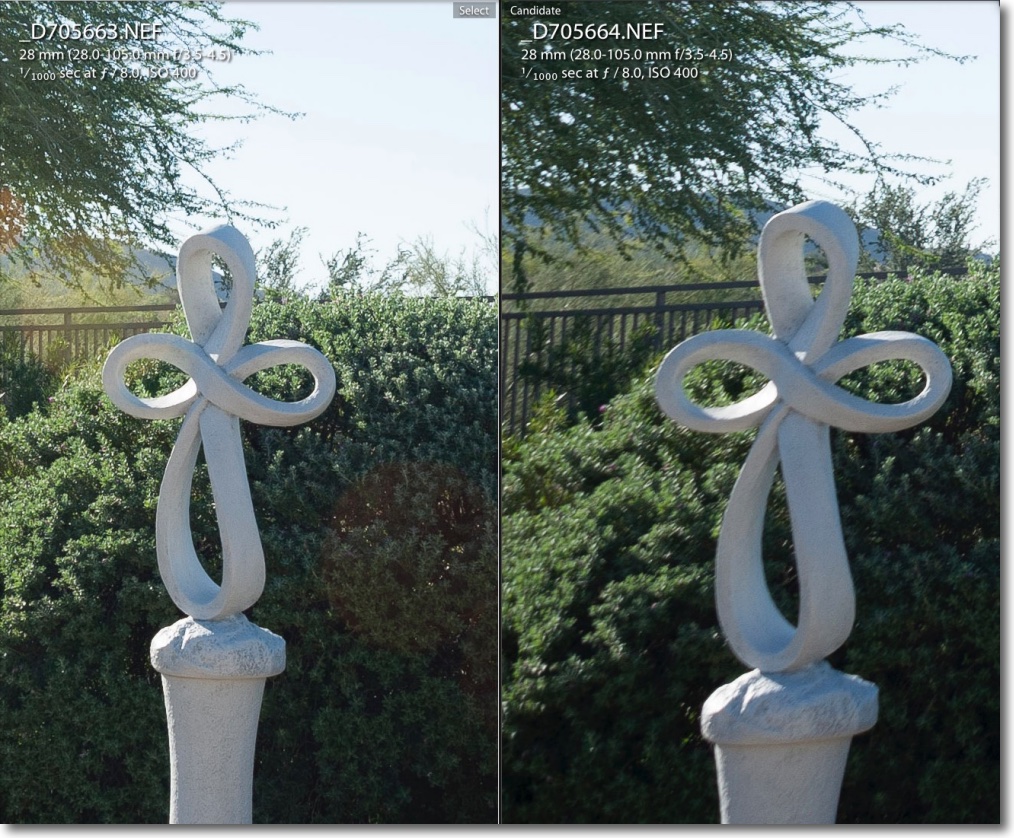
At 28mm, f/8, center and edge.
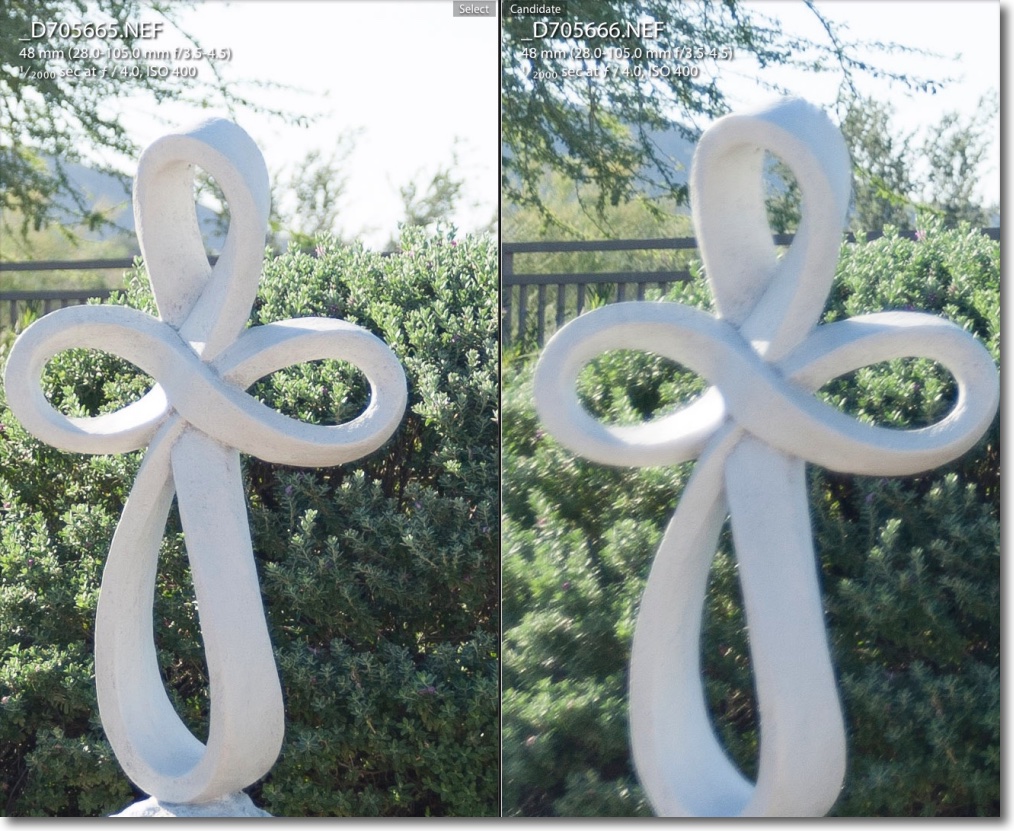
At 50mm, f/4, center and edge.
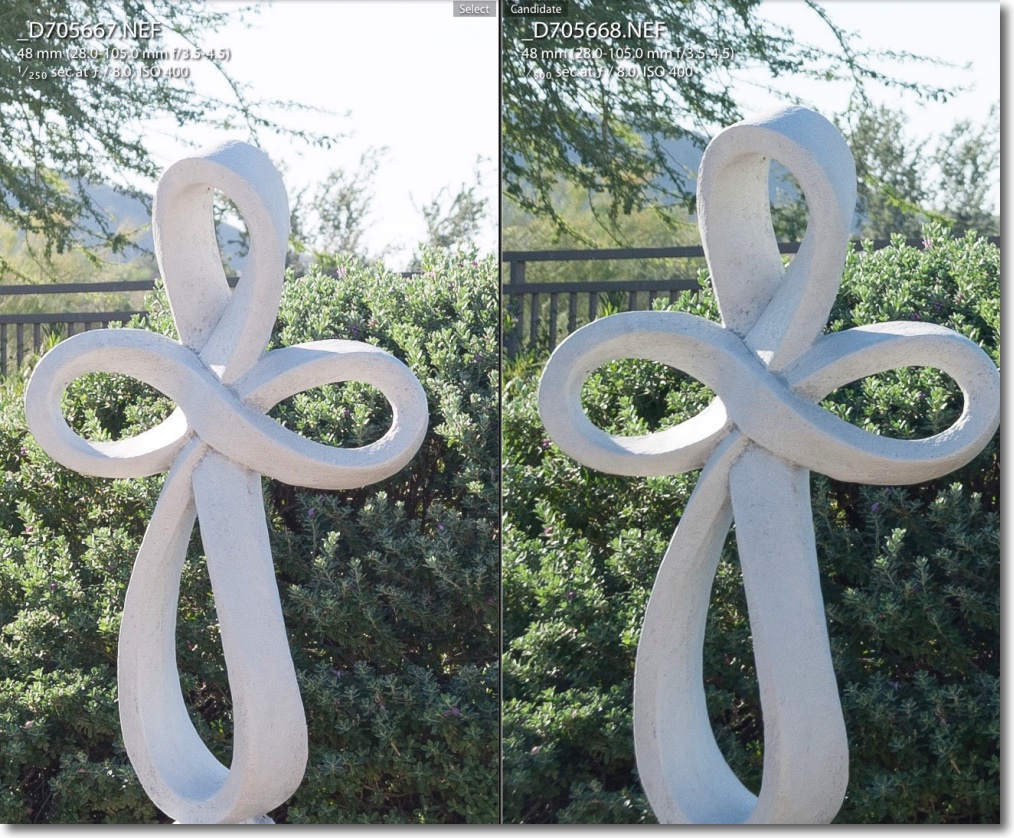
At 50mm, f/8, center and edge.
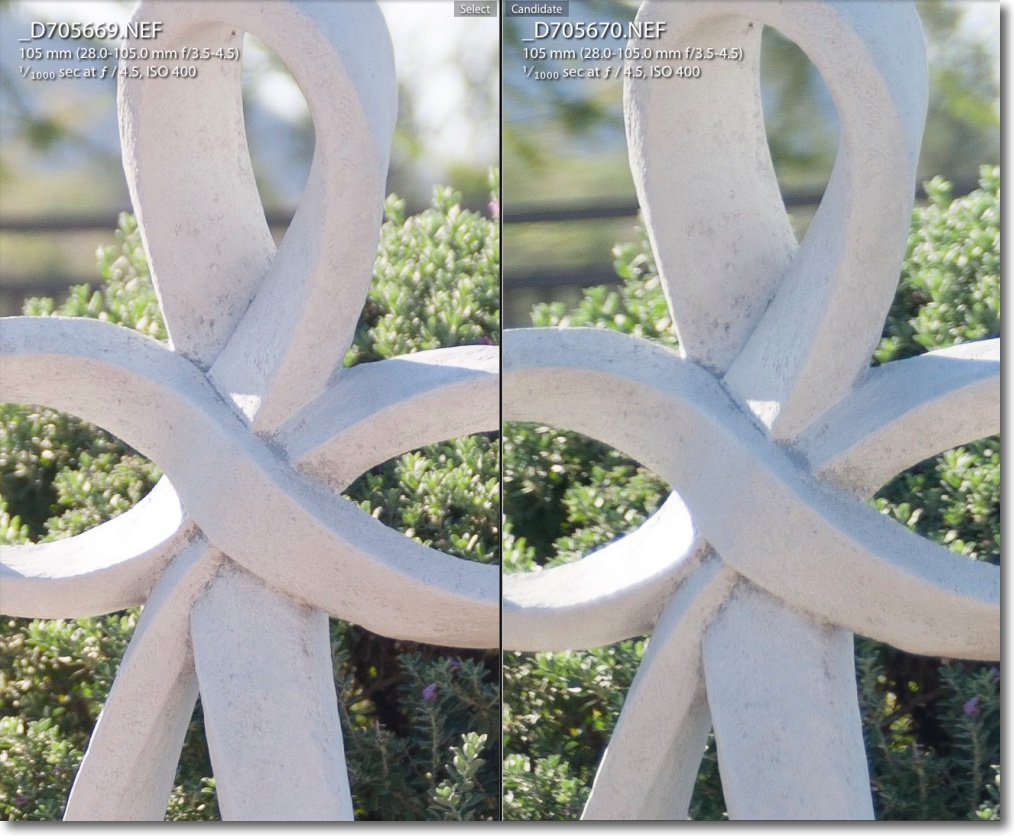
At 105mm, f/4.5, center and edge.
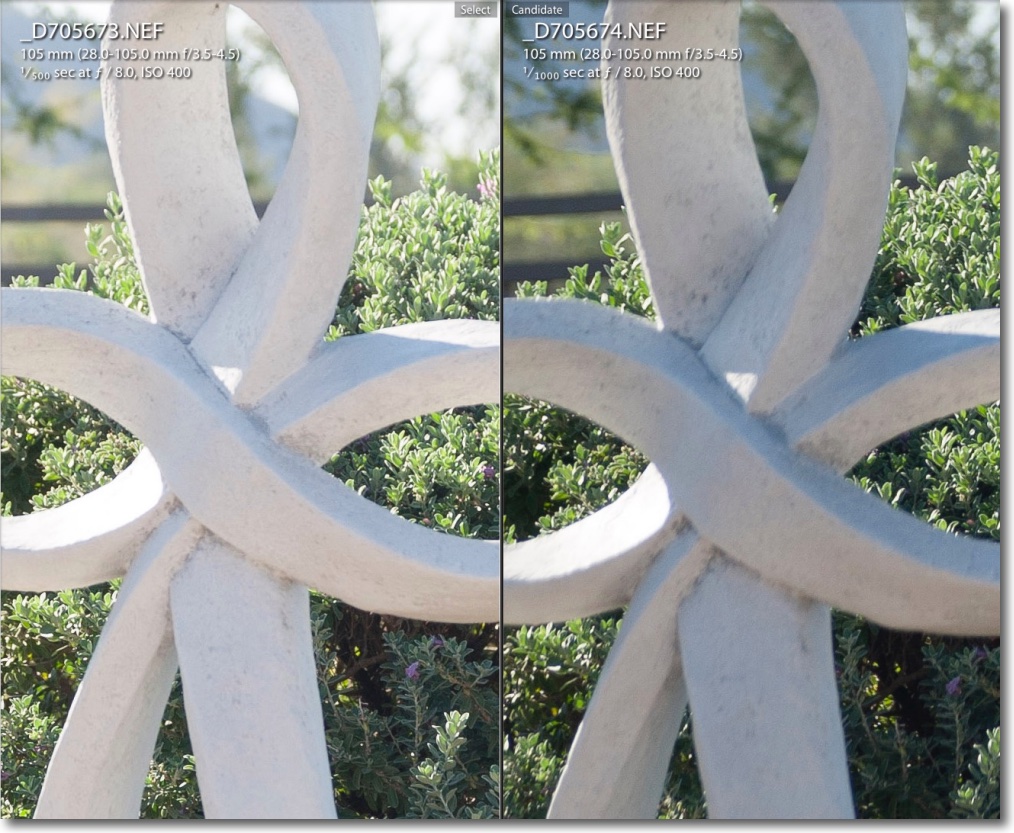
At 105mm, f/8, center and edge.
In summary edge performance at the wide end is ghastly at full aperture; you need to stop down to f/8 to make it useable. The 24-120mm optic is far better in this regard. The edges from the 28-105mm get progressively better as the focal length increases. Whereas the 24-120mm lens shows chromatic aberration (easily fixed in LR) the 28-105mm has none. Not published here, distortion characteristics disclose that the 28-105 shows mild barrel distortion at 28mm, disappearing at 50mm or longer. That is much better than the 24-120 which barrels greatly at 24mm and pincushions north of 50mm. Neither optic does a particularly good job of rendering out-of-focus areas, both yielding results that are too ‘busy’ for my taste. The 28-105mm lens shows no light fall off at the edges at any aperture or focal length. I have found that the later lens correction profile in LR for the 28-105mm f/3.5-4.5 G VR optic (the one with no aperture ring) works well with this earlier AF D lens.
Handling of both optics on the D700 DSLR and F100 film SLR is excellent. They balance well, zoom rings lack any gritty feel, AF is as fast as you need for all but sports subjects and as I always use aperture priority with aperture control transferred to the lens, the aperture ring on the 28-105mm is easier to access as the lens is less steeply pyramided at that location, making the ring more accessible. Not a big deal in practice.
The macro range on the 28-105mm is accessed by setting the focal length between 50 and 105mm and focus between infinity and 0.5 feet. The switch on the barrel is flipped and you get a very handy macro lens with a focal length range of 50-105mm. The long focal length setting is especially handy as it allows better clearance between the front of the lens and the subject. This is the closest I could get at 105mm:
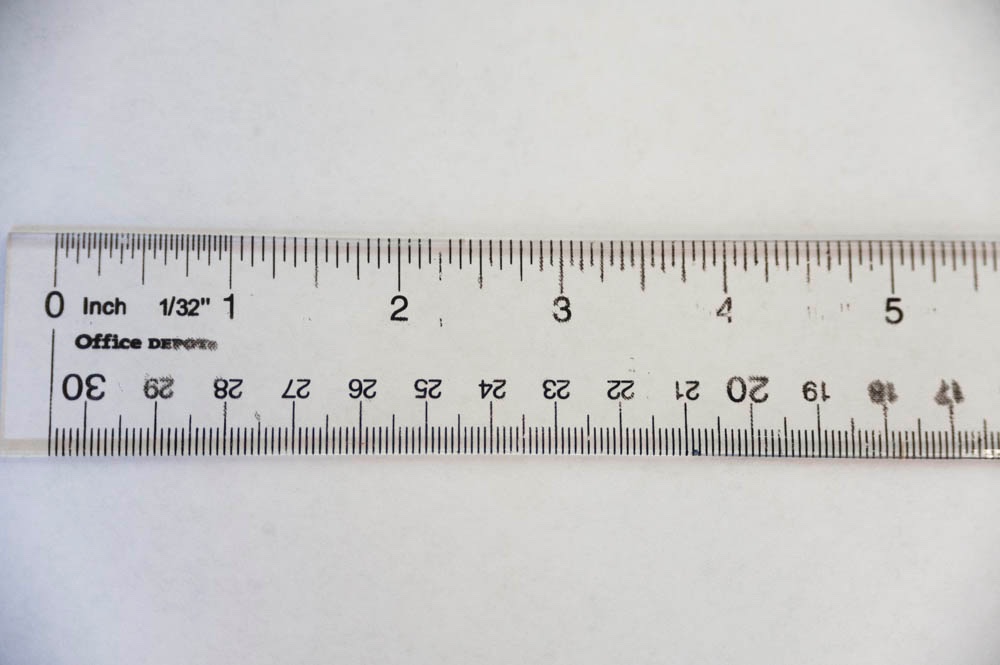
The magnification ratio computes to 1/4 life size.
Sharpness, even at f/4.5 in the macro range, is excellent – fully useable.
Conclusion: If you need 24mm (which is much wider than 28mm) and useable edge performance near full aperture at the wide end, the 24-120mm is the better choice. If you prefer a minimum of post-processing to remove distortion the 28-105mm is to be preferred. The construction quality and material choices (more plastic) of the 28-105mm are lower but hardly a deal breaker and the macro feature is both useable and the optics excellent. Weights of the two lenses with filters are 16oz for the 28-105mm and 20 oz for the 24-120mm.
It’s a nice choice to have to make with each lens selling for well under $100. I have both!
